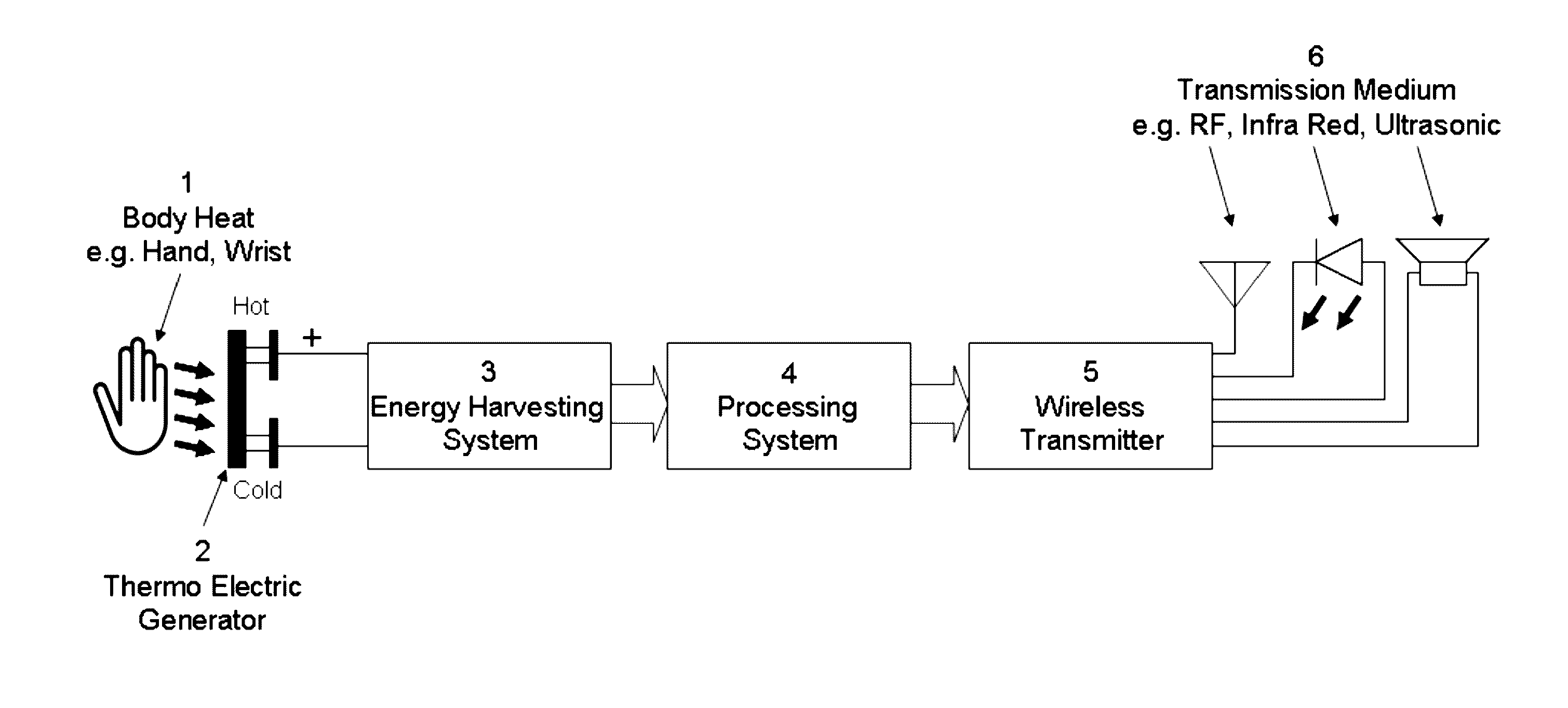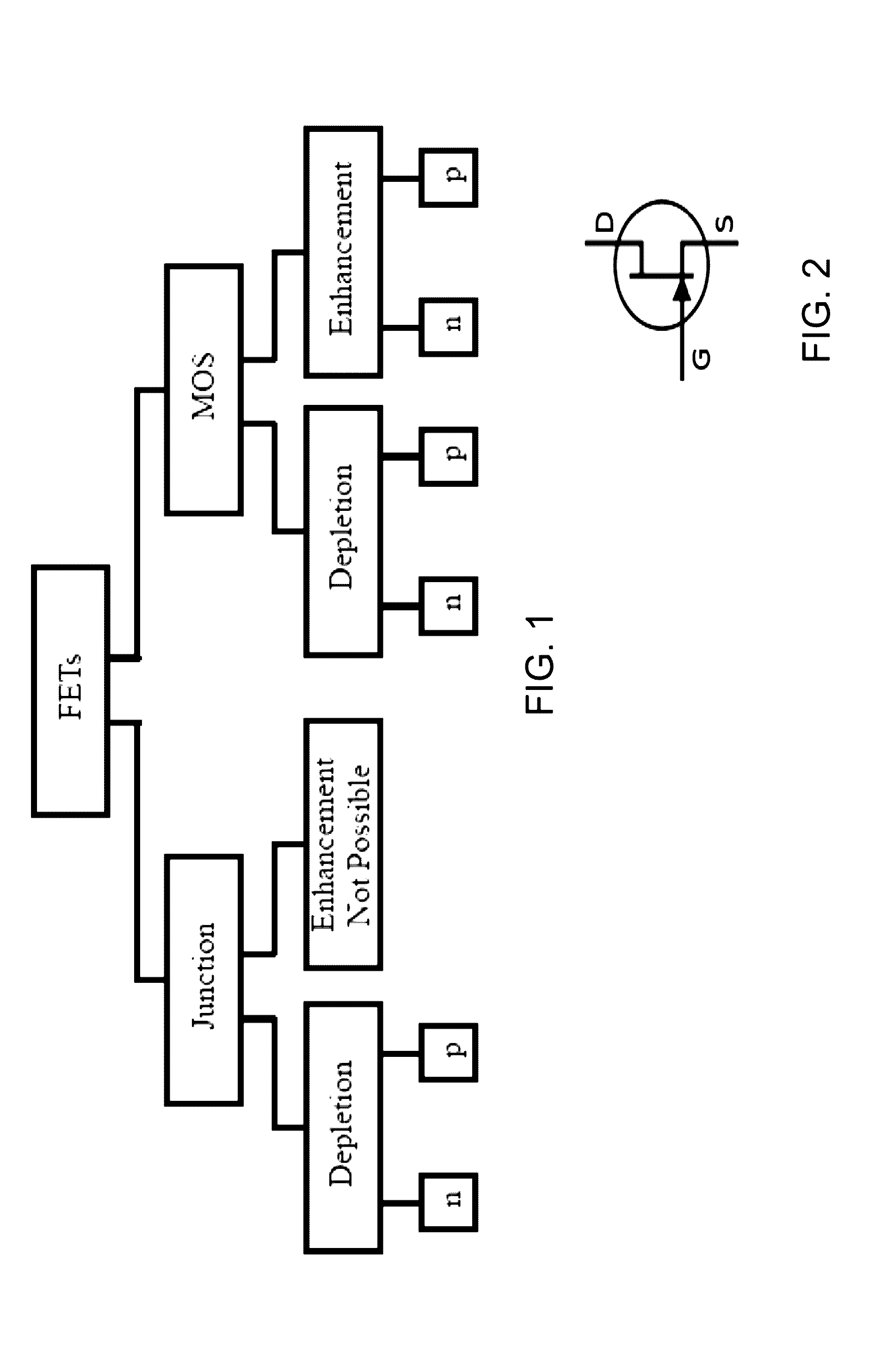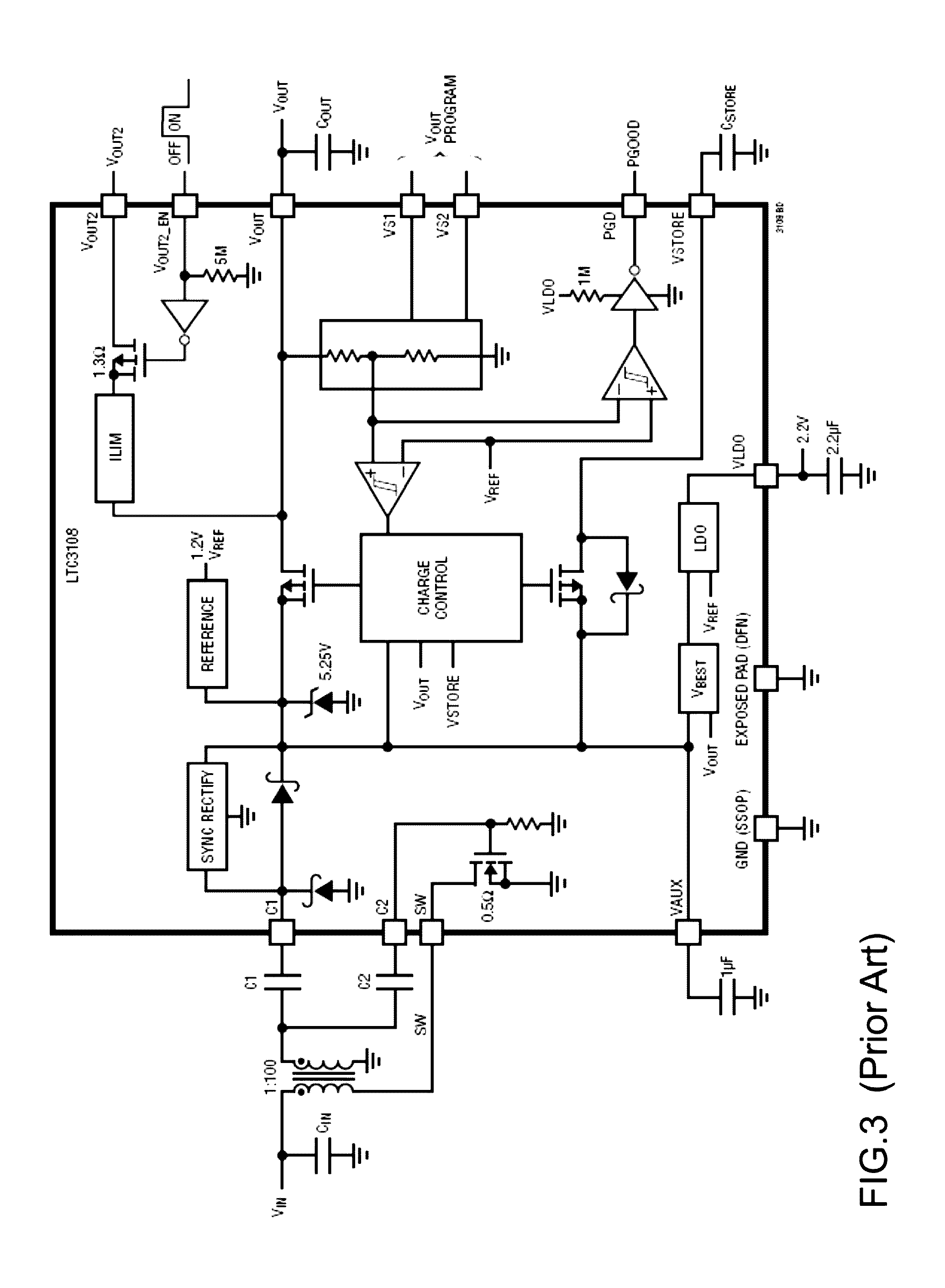Body Heat Powered Wireless Transmitter
a wireless transmitter and body heat technology, applied in the direction of generator/motor, transmission, dc source parallel operation, etc., can solve the problems of not being able to fully utilize not being able to be easily available, and not being able to achieve the effect of utilizing ambient energy through energy harvesting systems
- Summary
- Abstract
- Description
- Claims
- Application Information
AI Technical Summary
Benefits of technology
Problems solved by technology
Method used
Image
Examples
Embodiment Construction
[0092]Certain exemplary embodiments of the present invention are described herein and are illustrated in the accompanying figures. The embodiments described are only for purposes of illustrating the present invention and should not be interpreted as limiting the scope of the invention. Other embodiments of the invention, and certain modifications, combinations and improvements of the described embodiments, will occur to those skilled in the art and all such alternate embodiments, combinations, modifications, improvements are within the scope of the present invention.
Summary of the Problems
[0093]There are several issues that have obstructed development of practical portable electronic systems able to be reliably powered from body heat. These include 1) The system device needs to fit into the form factor of existing battery powered units. The best choice at present is to use a Peltier unit of between 20 mm square and 40 mm square. However, the available voltage is 100 mV maximum for t...
PUM
 Login to View More
Login to View More Abstract
Description
Claims
Application Information
 Login to View More
Login to View More - R&D
- Intellectual Property
- Life Sciences
- Materials
- Tech Scout
- Unparalleled Data Quality
- Higher Quality Content
- 60% Fewer Hallucinations
Browse by: Latest US Patents, China's latest patents, Technical Efficacy Thesaurus, Application Domain, Technology Topic, Popular Technical Reports.
© 2025 PatSnap. All rights reserved.Legal|Privacy policy|Modern Slavery Act Transparency Statement|Sitemap|About US| Contact US: help@patsnap.com



